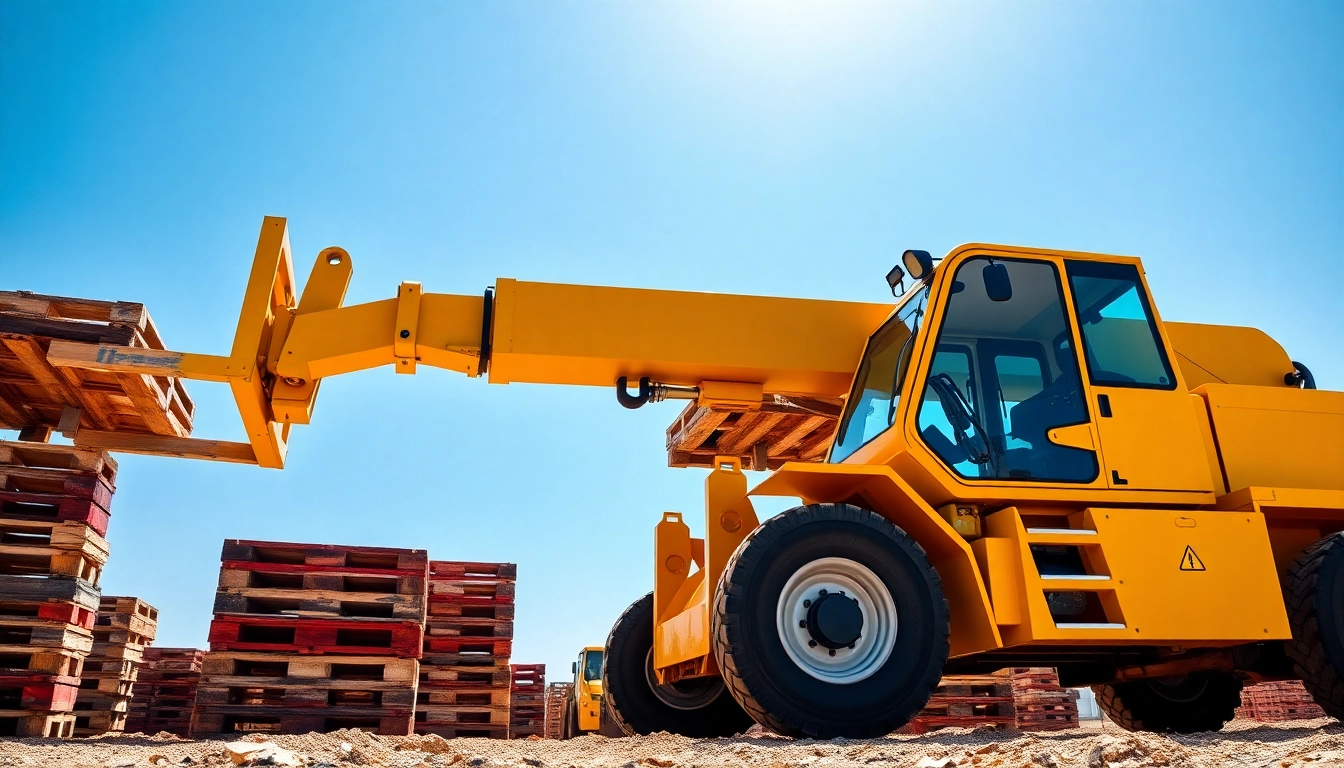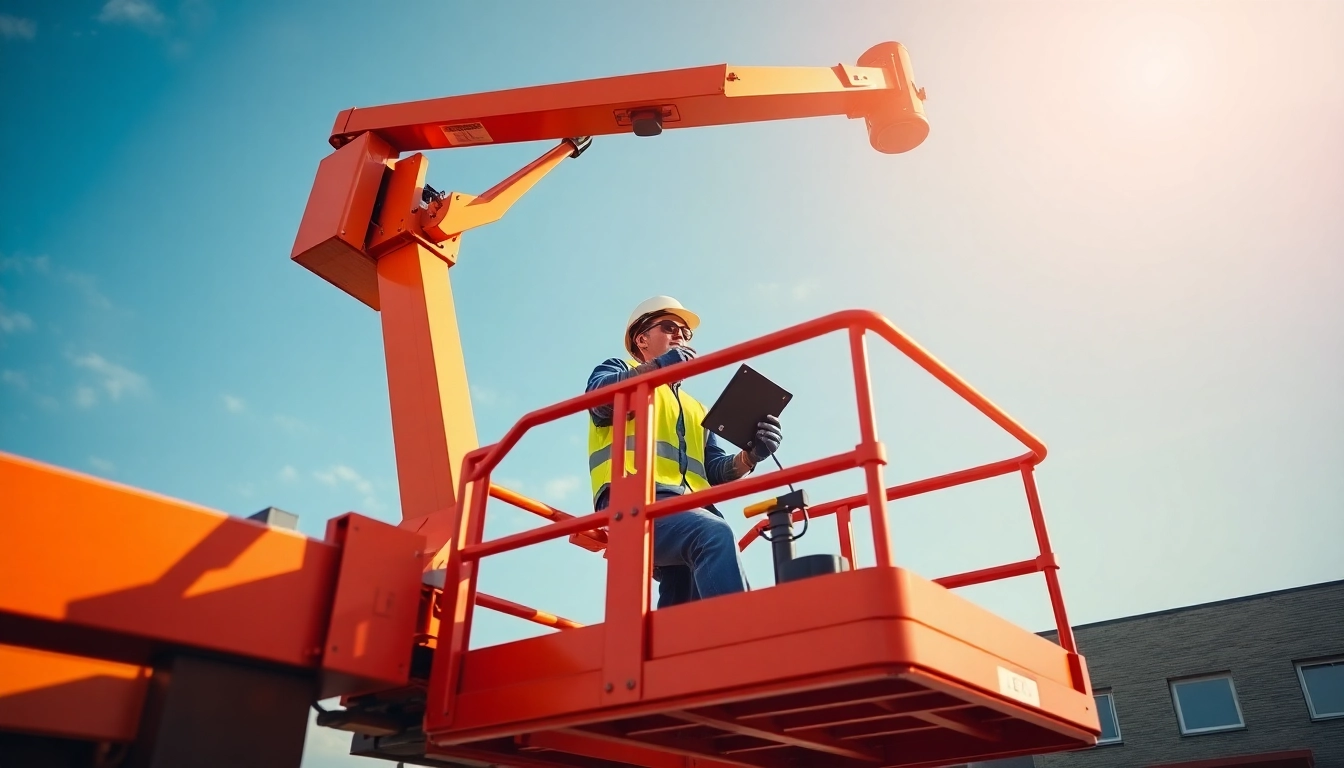Understanding Telehandler Rental: Key Features and Benefits
In today’s dynamic construction, industrial, and agricultural sectors, the versatility and efficiency of heavy machinery are crucial for project success. Among the most valuable equipment options is the telehandler, a telescopic handler that combines the lifting power of a forklift with the reach and flexibility of a crane. For many organizations, especially those seeking cost-effective and flexible solutions, telehandler rental offers an optimal approach to access high-quality machinery without the long-term commitments of purchasing. This comprehensive guide delves into what telehandlers are, how rental works, the advantages it offers, and practical insights to help make informed decisions for your project needs.
What is a Telehandler and How Does Rental Work?
Defining a Telehandler
A telehandler, or telescopic handler, is a versatile lifting machine that features a telescopic boom capable of extending forwards and upwards. Equipped with a variety of attachments—such as forks, buckets, or lifting hooks—telehandlers facilitate a wide range of lifting, placing, and material handling tasks across multiple industries. These machines are characterized by their high reach capabilities, robust load capacity, and maneuverability on construction sites, farms, warehouses, and industrial facilities.
How Telehandler Rental Works
Renting a telehandler involves selecting the right machine type, specifying rental duration, and arranging for delivery and return. Customers can choose from short-term hires—daily or weekly—or long-term agreements suitable for ongoing projects. Rental providers often include maintenance, support, and safety checks as part of their service offering, ensuring that the equipment is operational and compliant with safety standards. Making a rental booking typically involves assessing project requirements, consulting with rental companies to find the best equipment, and signing rental agreements that specify terms such as costs, liability, and operational support.
Advantages of Renting Telehandlers for Construction and Industry
Cost Efficiency and Flexibility
One of the primary benefits of telehandler rental is cost savings. Purchasing heavy machinery involves significant capital expenditure, ongoing maintenance costs, storage, and depreciation. Rental eliminates these costs, allowing companies to allocate budget more flexibly. Additionally, rental agreements can be tailored to project timelines, avoiding idle machinery costs and enabling quick scaling of equipment based on project demands.
Access to Latest Technology and Equipment
Rental companies frequently update their fleets with the newest models featuring advanced safety systems, improved fuel efficiency, and enhanced operational features. This ensures that users benefit from cutting-edge technology without the need for capital investment. Moreover, rental provides access to a broad range of models suited for different tasks, from compact mini telehandlers for tight spaces to high-reach machines for tall structures.
Reduced Maintenance and Support Burden
Maintenance, repairs, and safety inspections are typically managed by the rental provider. This reduces downtime and operational disruptions for the rental user, who can focus on project execution. Employers also benefit from expert support, emergency repairs, and compliance assistance, which contribute to safer and more productive work environments.
Rapid Deployment and Scalability
Rental services can deliver equipment swiftly to meet project schedules, often within hours of booking. This rapid deployment minimizes delays and ensures machinery is available when needed most. Rental options can also be scaled up or down based on project phases, offering unmatched flexibility.
Environmental and Safety Benefits
Newer rental models often incorporate environmentally friendly features, such as lower emissions and better fuel economy. Additionally, rental companies enforce safety standards, provide operator training, and ensure regular safety inspections, fostering a safer working environment.
Factors to Consider When Booking a Telehandler Rental
Size, Reach, and Load Capacity Options
Selecting the appropriate telehandler involves understanding your specific project requirements. Key specifications include:
- Maximum Reach: Determines how high and far the machine can lift or extend to place materials.
- Load Capacity: Ensures the machine can handle the weight of the materials or equipment involved.
- Size and Maneuverability: Compact models are ideal for tight spaces, while larger machines handle heavier loads.
Assessments should be based on the maximum height needed, typical load weights, and working environment constraints.
Rental Duration, Pricing, and Delivery Logistics
Determine whether your project requires daily, weekly, or monthly rentals. Longer durations often attract discounted rates, and some providers offer flexible leasing options. Clear planning for delivery and pickup logistics is vital—consider the site access, transportation costs, and potential for on-site storage. Regional providers often offer rapid delivery options across the UK to meet tight schedules.
Operator Requirements and Safety Protocols
Depending on the rental agreement, operators might need specific certifications or training. Ensuring operators are qualified reduces accident risks and complies with health and safety regulations. Many rental companies provide operator training or recommend certified professionals. Also, safety protocols such as load limits, operational planning, and emergency procedures should be strictly followed to maximize safety and operational effectiveness.
Best Practices for Safe and Effective Telehandler Use
Pre-Rental Inspection and Maintenance Checks
Before using a rental telehandler, conduct thorough inspections to verify the vehicle’s condition. Check hydraulic systems, tires, brakes, controls, and safety features. Document any existing damages and communicate with the rental provider to ensure repairs or adjustments are made before deployment. Regular maintenance during the rental period extends machine life and averts safety hazards.
Proper Operating Techniques and Safety Compliance
Operators should adhere to manufacturer guidelines and industry best practices. Key safety measures include:
- Maintaining load limits at all times.
- Ensuring the work area is clear of obstacles and personnel.
- Using appropriate attachments securely.
- Keeping within designated operational parameters, especially when extending the boom.
PPE (Personal Protective Equipment) and adherence to site-specific safety protocols are essential.
Maximizing Efficiency During Your Rental Period
To get the most value from your telehandler rental:
- Plan your operations to minimize machine idle time.
- Coordinate tasks to reduce repositioning and setup time.
- Train operators thoroughly to avoid mishandling or safety incidents.
- Regularly monitor equipment performance and address minor issues promptly.
Implementing these practices ensures smooth workflows and cost-effective operation.
Top Tips for Cost-Effective Telehandler Rental
Finding Competitive Rates and Value Packages
Explore multiple rental providers to compare rates, included services, and additional charges. Often, bulk or long-term rentals can be negotiated for discounts. Ask for bundled packages that include maintenance, safety checks, and operator support to maximize value.
Booking in Advance and Planning Logistics
Advanced booking reduces the risk of equipment shortages and allows for better logistical planning. By scheduling delivery and pickup ahead of time, you can avoid last-minute surcharges or delays, ensuring the project remains on track.
Utilizing Rental for Different Project Phases
Renting equipment at different stages—such as initial site clearance, material handling, or final assembly—optimizes resource allocation. Switching between suitable models for each phase can reduce costs and improve operational efficiency.
Case Studies & Industry Applications of Telehandler Rentals
Construction, Landscaping, and Agricultural Uses
Telehandlers are instrumental in diverse projects. In construction, they facilitate building high-rise frameworks, moving pallets, and installing windows. Landscapers and farmers leverage telehandlers to transport soil, hay bales, and equipment across uneven terrains. A notable example is a UK-based construction firm that reduced project delays by renting high-reach telehandlers for challenging building sites, showcasing flexibility and operational efficiency.
Success Stories and Client Testimonials
Many clients report significant cost savings and productivity boosts through rental services. For instance, a major infrastructure project utilized rental telehandlers to handle heavy materials during peak phases, reducing equipment idle time and avoiding large capital expenditures. Testimonials emphasize the importance of reliable service, quality machinery, and expert support in achieving project goals.
Innovative Uses and Future Trends
The future of telehandler rental involves integrating automation, telematics, and eco-friendly technologies. Autonomous telehandlers are being tested for precise operations, while real-time data monitoring improves maintenance and safety. Rental providers adopting these innovations position their clients at the forefront of industry evolution.









